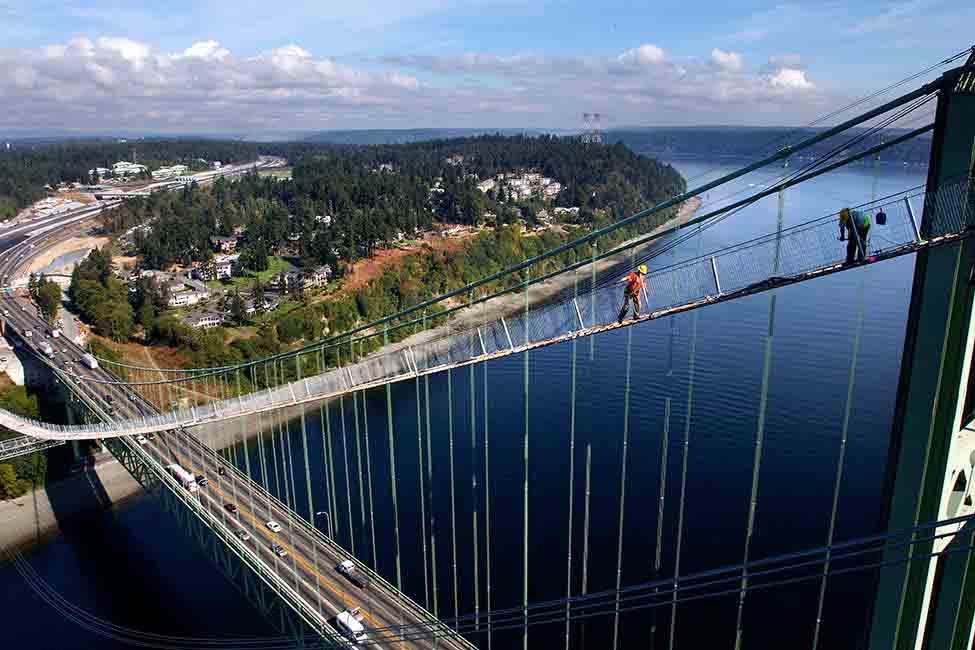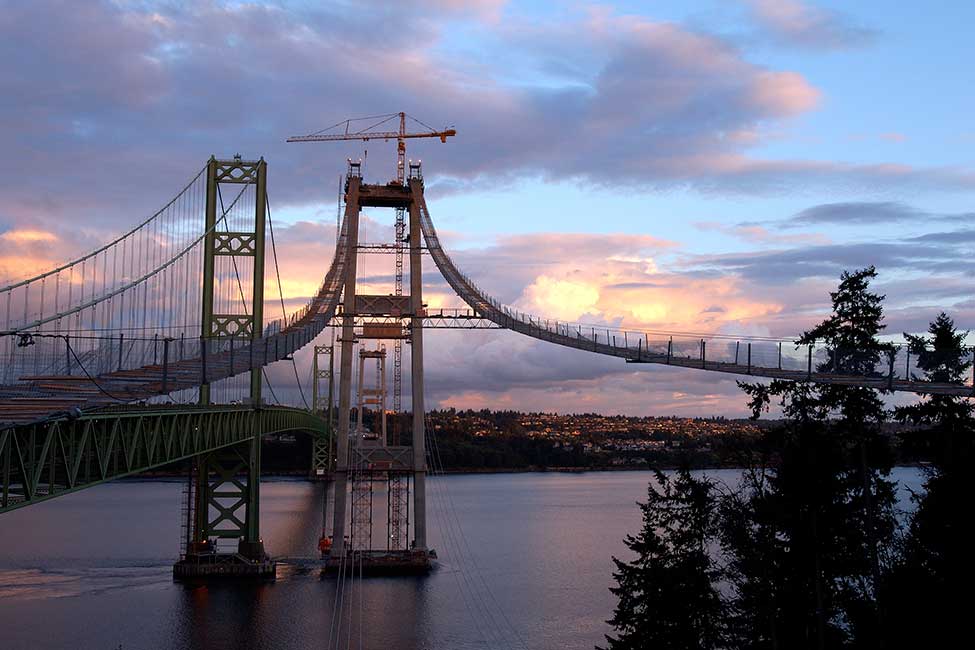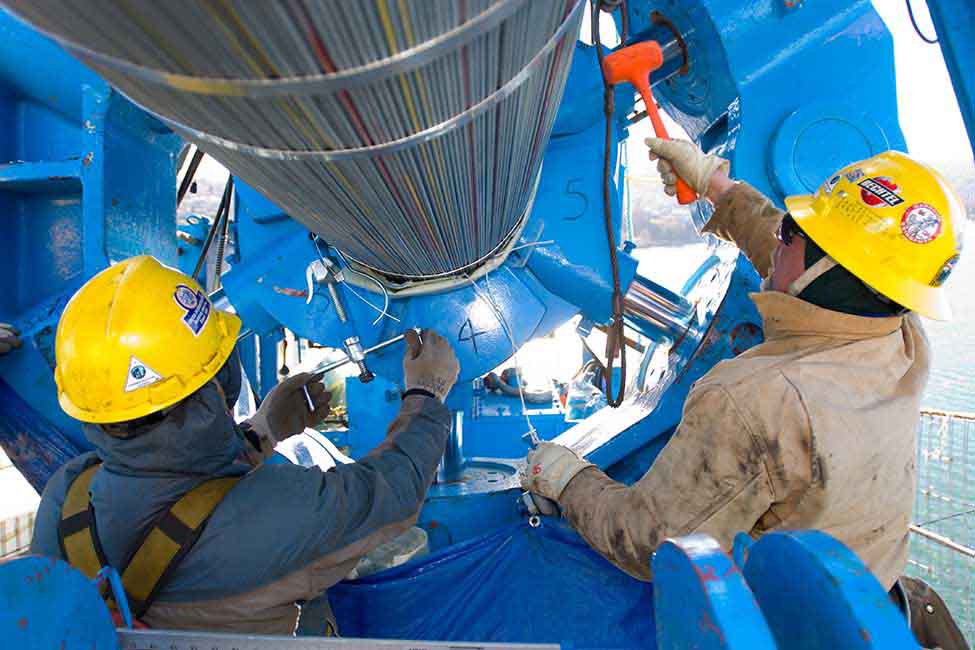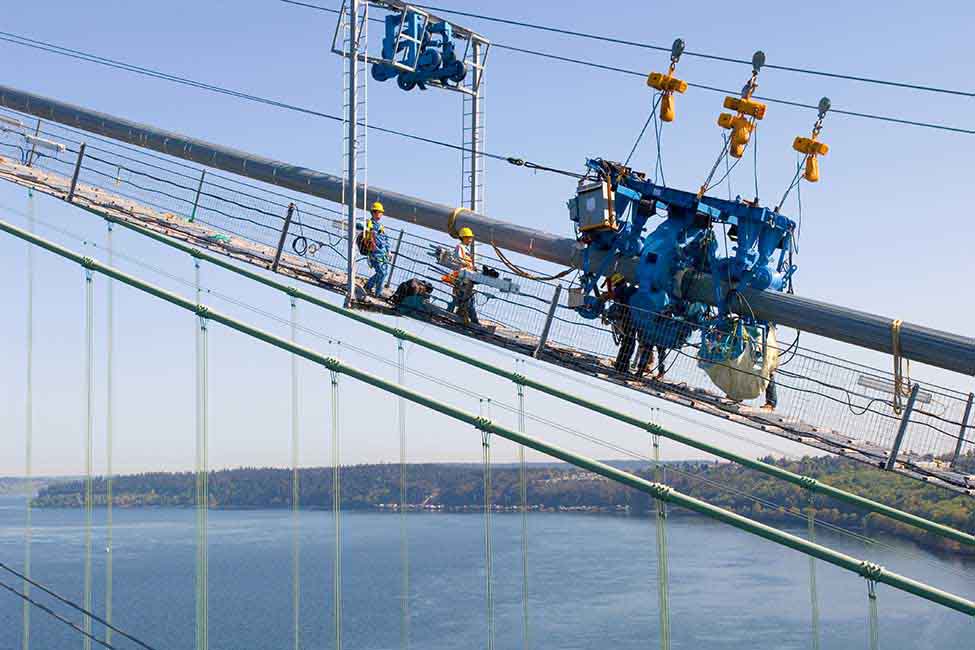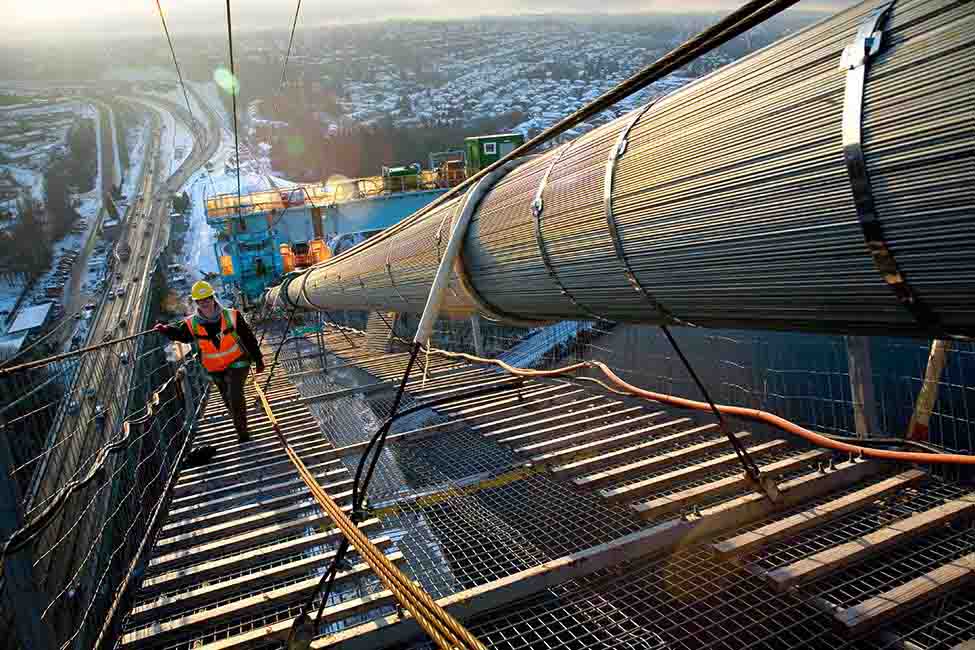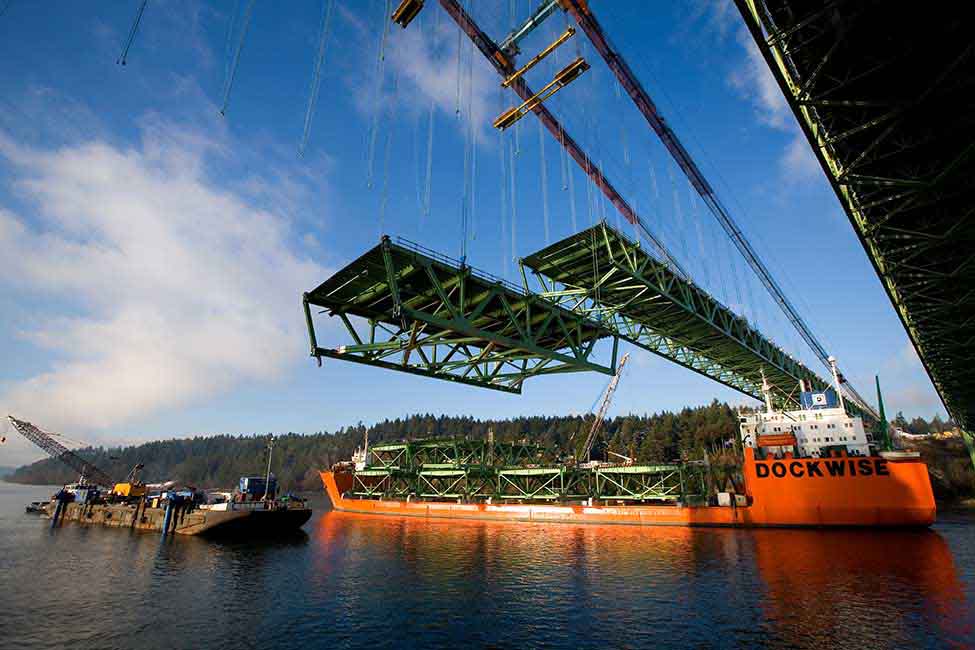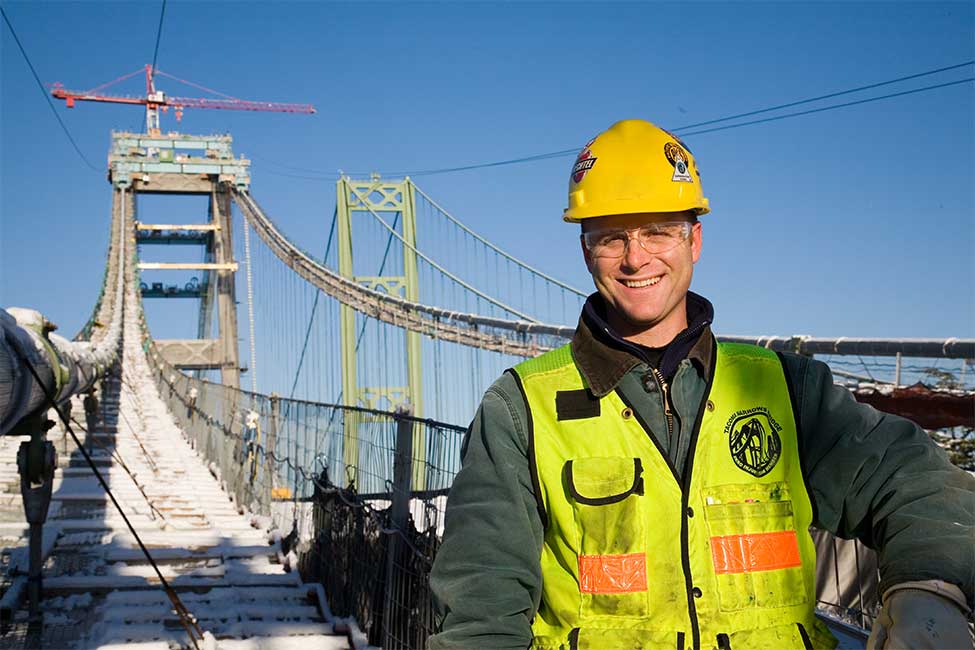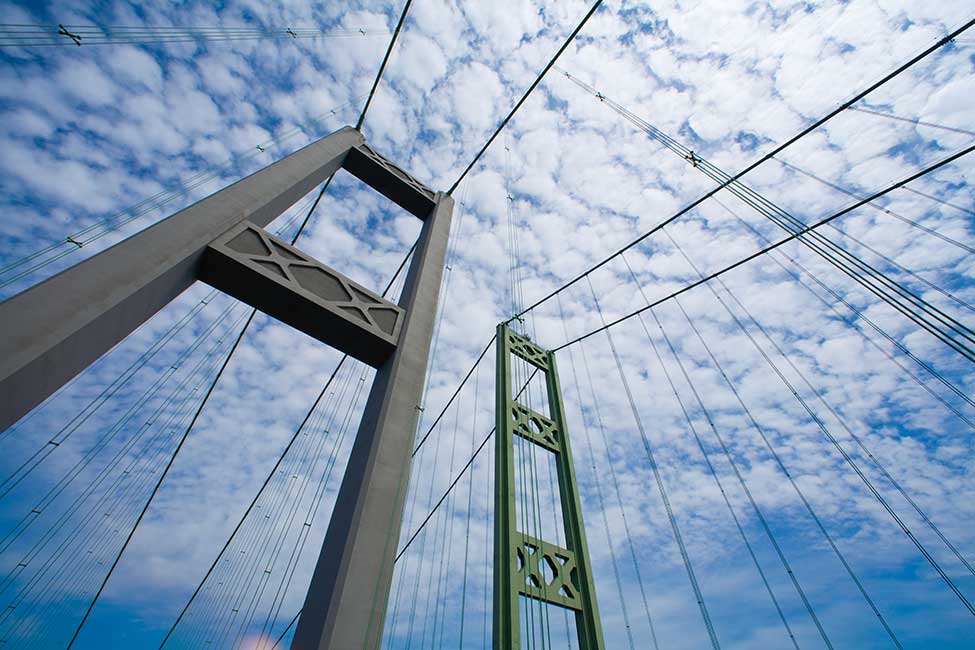In 2007, a Bechtel joint venture with Kiewit Pacific completed the longest U.S. suspension bridge built in four decades—the new Tacoma Narrows Bridge. As the third bridge to cross Puget Sound from Tacoma to Gig Harbor, the new span shares traffic with its adjacent namesake, which was completed following the spectacular collapse of the first Tacoma Narrows Bridge in 1940.
The last undulating moments of that aerodynamically unstable prewar bridge—Galloping Gertie—were caught on newsreel footage and helped forever change the way suspension bridges are built. The new bridge can withstand winds two-and-a-half times the speed of those that toppled Gertie.
The first major phase of construction—the foundations for the towers—began in the summer of 2003, when two giant caissons, each the size of a seven-story building, were towed into place just south of the existing bridge. Over the course of several months, they were slowly filled with concrete and sunk to the narrows floor, 50 yards (46 meters) below the surface. Our project team completed the caissons by June 2004.
Thanks to advances in materials technology, the new towers are made of reinforced concrete, requiring less maintenance than the steel towers of the adjacent bridge.
One of a new generation of suspension bridges
Image Gallery
Project awards
- Top Ten List of Infrastructure Projects 2009, International Right of Way Association
- America's Transportation Award 2008, American Association of State Highway and Transportation Officials
- Build Washington Awards 2008, Associated Construction Publications
- 2007 Public Project of the Year 2007, NAIOP, Commercial Real Estate Development Association
Trapeze act
Each of the Tacoma Narrows Bridge’s 46 steel road deck segments was lifted from a barge and 'trapezed' into place, an innovative process that required careful planning, coordination, and factoring in tidal currents and wind conditions. Two gantry cranes—moving along the bridge’s main suspension cables like train cars on rails―hoisted the sections from barge to bridge.
Working in treacherous currents above and around the officially protected historic sunken ruins of Galloping Gertie was was a unique experience for Bechtel’s bridge-building professionals.
Learning from past failures, such as Galloping Gertie, designers today use lighter, less-rigid steel plates with beams running two directions to better distribute loads and flex in response to changing environmental conditions—including high winds.


